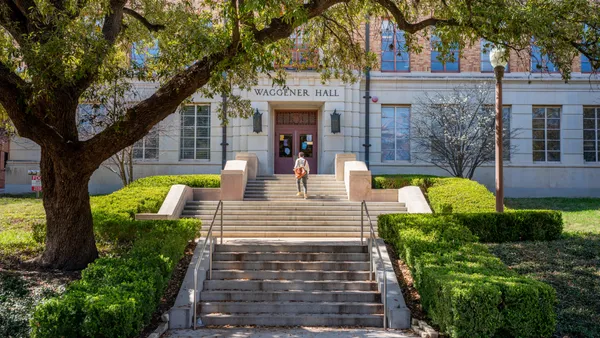In 2013, officials at St. George’s University in Grenada, West Indies launched their first massive online open course "One Health, One Medicine: A Global Health Approach," promoting on-demand learning modules to students with interest in pre-medical or pre-veterinary training.
Officials capped the eight-week course at 1,000 students to better assess the learning outcomes of students and delivery methods. And in the years since, the institution has redesigned the course to refine its presentation, enrollment strategy and capacity to engage students from around the world.
In its fourth edition, the MOOC now attracts an annual average of 800 learners and offers educational and professional certification credits for participants. Dr. Satesh Bidaisee, an associate professor of public health and preventive medicine at St. George’s, spoke with Education Dive to offer the five best practices for establishing an MOOC for international learners.
Manage expectations in the pilot
“Our first-year goal was to attract 1,000 students from countries around the world. Because it was our first MOOC, we wanted to cap enrollment at that number because we wanted to effectively capture the number of students completing the course, and because at the time, we had to work with the tools of the platform, which were taped lectures presented in a traditional classroom setting.”
“At the end of the course, we had an 11% completion rate. We thought it was a failure, but realized that it was actually about three times the average rate for MOOCs.”
Customization is key
“We realized that to make a more meaningful learning experience for a global audience, we had to first build a course for students that has topics to which they can relate. Public health is something that impacts everyone, and is a subject of conversation within many different countries on subjects like clean water, food preservation, and disease control.”
“So we built a global health course for which students from all over the world can relate on our own platform (SGX), which gives us lot of flexibility for office hours peer review, blog postings, chat modules with Twitter and Skype, and other things which allowed offer an engaging experience. When you are working with students from many different countries, you have to make sure that each of the course elements, those things which are recorded and those things that are live, are adaptable to people engaging with content and tools at different times.”
Finding the right personnel and technology
“The number of countries from where students are participating is at about 45 nations now. And once that happened, we had to figure out how to make the course more structured for online offerings with synchronous and asynchronous offerings. Every week, all content has to be downloadable because not all students have regular access to WiFi. So we have three different staff members; a program director, an instructional designer and an audio/video editor working to make the program accessible for all of our learners.”
Using professional networks to market the MOOC
“We work with Facebook and social media to promote the course, but we also work with the Consortium of Universities for Global Health to market to program and to send it to different professional and student groups. We also rely on the faculty here who represent 140 countries, and they help to distribute the course information to their respective countries as well.”
“We also feel that by putting in professional development credits, people feel that it is more than a free course. It’s a professional development experience.”
Design with the future in mind
“We are now offering our fifth MOOC which will be a 12-month course with 12 separate modules offering different topics and lecturers. There is some interest that in the future, we could consider MOOCs as micro-courses that can eventually be counted as part of an academic package or as a pre-program. We’re trying to see if this can be expanded beyond a typical model because even though brick is what we’re accustomed to, click is the reality. Through its delivery and mechanisms, MOOCs are not only feasible but necessary. So we’re happy to contribute to this growing necessity.”














